- POINT(S)
- 1) In British maritime (particularly RN) usage, now largely obsolete, a term
sometimes applied to the fly corners of a flag or ensign (see also fly 1))
2) The term may also be employed (either in the singular or plural as appropriate) to
describe the fly of a triangular or swallow-tailed pennant.
- POINT OF HONOUR
- See ‘honour point’.
- POINTED (or POINTS)
- 1) In vexillology the term used to indicate the number of points on a star or
star-like charge, for example a five-pointed star or a star of five points – but see
‘rays 1)’ (also ‘star 1)’)
2) In heraldry see ‘point-in-point’.
3) A term sometimes (incorrectly) used to describe the point of an arrow see barbed.
- POINT-IN-POINT (or POINTED)
- A heraldic term for when the division of a shield forms a chevron usually embowed -
at its base - pointed or enty (see also
‘base’, ‘chevron 1)’,
‘embowed’,
‘impale’,
‘quartering 1)’ and
‘shield 1)’)

Flag and Arms of North Rhine – Westphalia, Germany (CS)
- POLE
- See ‘flag pole’.
- POLE MAST (or POLEMAST)
- A flagpole that is straight and clear of any projections such as cross bars,
yards, or gaffs (see also ‘cross bar’,
‘flag pole’,
‘gaff’ and ‘yard’).
Please note that this term was originally introduced
to describe a mast or masts on those steam vessels not equipped with an auxiliary
sailing rig.

HMS Devastation 1871 1908 (Wikipedia)
- POLICE FLAG (ENSIGN or PENNANT)
- A flag or ensign, different from the national/state flag or government ensign (or
a variant thereof) or a pennant, which specifically identifies the installations or
vessels of a countrys police service (see also
national flag,
government ensign and
service ensign under
ensign, and
state flag).
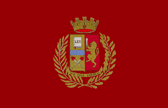

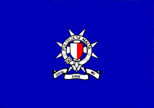


Police Flag, Italy (w);
Flag of the Police Mounted Branch, Canada (fotw);
Police Flag, Malta (fotw); Police Flag/Ensign,
Israel (fotw); Marine Police Pennant,
Singapore (fotw)
- POLITICAL FLAG
- 1) The flag, either official (formally adopted) or unofficial (spontaneously
displayed by supporters), of a political party or movement (see also
sash 2) and ‘tribal flag’).
- 2) A flag, as opposed to a banner as defined herein, that is specifically
designed to express a political or popular sentiment - a protest flag (see also
‘banner 3)’ and note below).
![[political flags]](../images/v/vxt-d248.gif)
![[political flags]](../images/v/vxt-d248d.gif)
![[political flags]](../images/v/vxt-d248b.gif)
![[political flags]](../images/v/vxt-d248c.gif)
![[political flags]](../images/v/vxt-d248a.gif)
From left: African National Congress, RSA;
Međimurje Party, Croatia;
American Indian Movement, USA;
Communist Party, UK;
Polish Independence Movement Solidarity 1980’s (fotw)
Please note that, in both historical and/or contemporary terms,
a political flag and a trade union flag can often be very closely linked – see
‘trade union flag’.
- POLITICAL SASH
- See sash 2).

Political Sash of the Womens Suffragette Movement 1917, US
- POMMED
- A term sometimes used in place of the usual heraldic term pommeled to indicate the pommel of a sword or dagger – but see
‘hilted’
and following note (also ‘hafted’ and
‘shafted’).
- POMMELED
- The heraldic term for the pommel of a sword or dagger but see
hilted and its following note.


Arms and Flag of Kalnik, Croatia (fotw)
- PORT EPEE
- See ‘dress knot’.
![[dress knot]](../images/v/vxt-d1325.gif)
Officers Port Epee/Dress Knot, USN and USCG (marlowwhite.com)
- PORTOLANO (or PORTOLAN CHART)
- The term for a navigational chart of the 14th to the 16th Centuries, particularly showing
coastlines and ports and usually bearing illustrations of their arms and flags.
![[dress knot]](../images/v/vxt-d2586.gif)
Portolano, Spanish c1500 (Wikipedia)
- PORTUGUESE TEMPLAR CROSS
- See ‘rounded cross’.
![[Portuguese Templar cross]](../images/v/vxt-d1048a.gif)
![[Portuguese Templar cross]](../images/v/vxt-d1048b.gif)
Arms and Flag of Outeiro Major, Portugal (Sιrgio Horta)
- POSITION OF HONOUR (OR HONOR)
- The position in which the most senior flag, emblem or coat of arms – usually
a national flag, emblem or coat of arms - is to be placed - sometimes called
the place of honour. The particulars vary
slightly in detail, legal status and extent from country to country; however,
the general principles remain the same and are listed in
Appendix II (see also
‘rules of etiquette’ and
‘precedence’).
Please note – not to be confused with the honour point – see
‘honour point’.
- POSITIONAL FLAG (or COLORS)
- 1) In US army usage, that flag which corresponds to a particular position
held, rather than to the rank of the officer who currently holds it – but see
‘appointment flag’ (also
‘rank flag 1)’).
- 2) See ‘distinguishing flag 1)’.
![[positional flag example]](../images/v/vxt-d249.gif)
![[positional flag example]](../images/v/vxt-d2122.gif)
![[positional flag example]](../images/v/vxt-d2123.gif)
Army Surgeon General, US (fotw);
Under Secretary of the Army, US (fotw);
Sergeant Major of the Army, US (fotw)
- POST FLAG
-
1) In US military usage, that size of national flag flown regularly over army and marine corps posts –
8.95 feet (2.72m) wide by 17 feet (5.18m) long for the army and 10 feet (3 m) wide by 19 feet (5.8 m) long
for the marine corps (see also ‘garrison flag’,
‘storm flag’ and
‘war flag’).
2) See ‘postal flag’.
![[post flag example]](../images/v/vxt-d1804.gif)
Post/Postal Flag 1950 1994, Germany (fotw)
- POSTAL FLAG (ENSIGN or PENNANT)
- The distinguishing flag, ensign or pennant of a country’s postal services – a mail flag/pennant or post
flag/pennant (see also ‘air mail flag and
service ensign under ensign).

![[postal flag - Denmark]](../images/v/vxt-d251.gif)
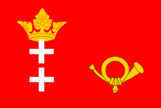
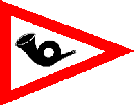
From left: Postal Flag, France (tw); Postal Flag and Ensign of Denmark (fotw);
Postal Flag and Ensign 1920 1939, Danzig (fotw); Postal Pennant, Poland (fotw); Royal Mail Pennant, UK (fotw)
- POST PENNANT
- See postal flag.

Post/Postal Pennant, Italy (fotw)
- POSTURES
- A 16th/17th Century term for the formal flag waving expected of a colour bearer
for reasons of either bravado or dignity (see also
‘colour 2)’,
‘colour bearer’,
‘company colours’,
‘ensign 4)’,
‘flag tossing’,
‘pavisade’,
‘stand 1)’ and
‘streamer
2)’).
- POTENT
- 1) The heraldic term for a fur that is shown as a series of crutch-shaped
charges and usually (but not exclusively) seen in blue on a white or silver
field (see also ermine’,
furs in ‘Appendix III’, and
‘vair’).
2) The term may also be used when the edge of an ordinary is shown with crutch-shaped
extensions but see note below
(also cross-potent in Appendix VIII and
ordinary).


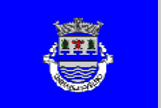
Example; Flag and Arms of Unhais-o-Velho, Portugal (Sιrgio Horta)
Please note with regard to 2) that this term is never used alone, but always with the
ordinary being blazoned, for example a fess-potent as illustrated above.
- POTENT CROSS
- See cross potent in appendix
VIII.

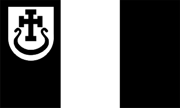
Arms and Flag of Wielka Nieszawka, Poland (fotw)
- POWDERED
- See semé in appendix
VIII.

Banner of France c1200 c1350 (fotw)
- POW-MIA (PRISONER OF WAR-MISSING IN ACTION) FLAG
- See ‘memorial flag 2)’.

POW-MIA Flag, US and Canada (fotw)





![[political flags]](../images/v/vxt-d248.gif)
![[political flags]](../images/v/vxt-d248d.gif)
![[political flags]](../images/v/vxt-d248b.gif)
![[political flags]](../images/v/vxt-d248c.gif)
![[political flags]](../images/v/vxt-d248a.gif)


![[dress knot]](../images/v/vxt-d1325.gif)
![[positional flag example]](../images/v/vxt-d249.gif)
![[positional flag example]](../images/v/vxt-d2122.gif)
![[positional flag example]](../images/v/vxt-d2123.gif)
![[post flag example]](../images/v/vxt-d1804.gif)

![[postal flag - Denmark]](../images/v/vxt-d251.gif)














![[dress knot]](../images/v/vxt-d2586.gif)
![[Portuguese Templar cross]](../images/v/vxt-d1048a.gif)
![[Portuguese Templar cross]](../images/v/vxt-d1048b.gif)